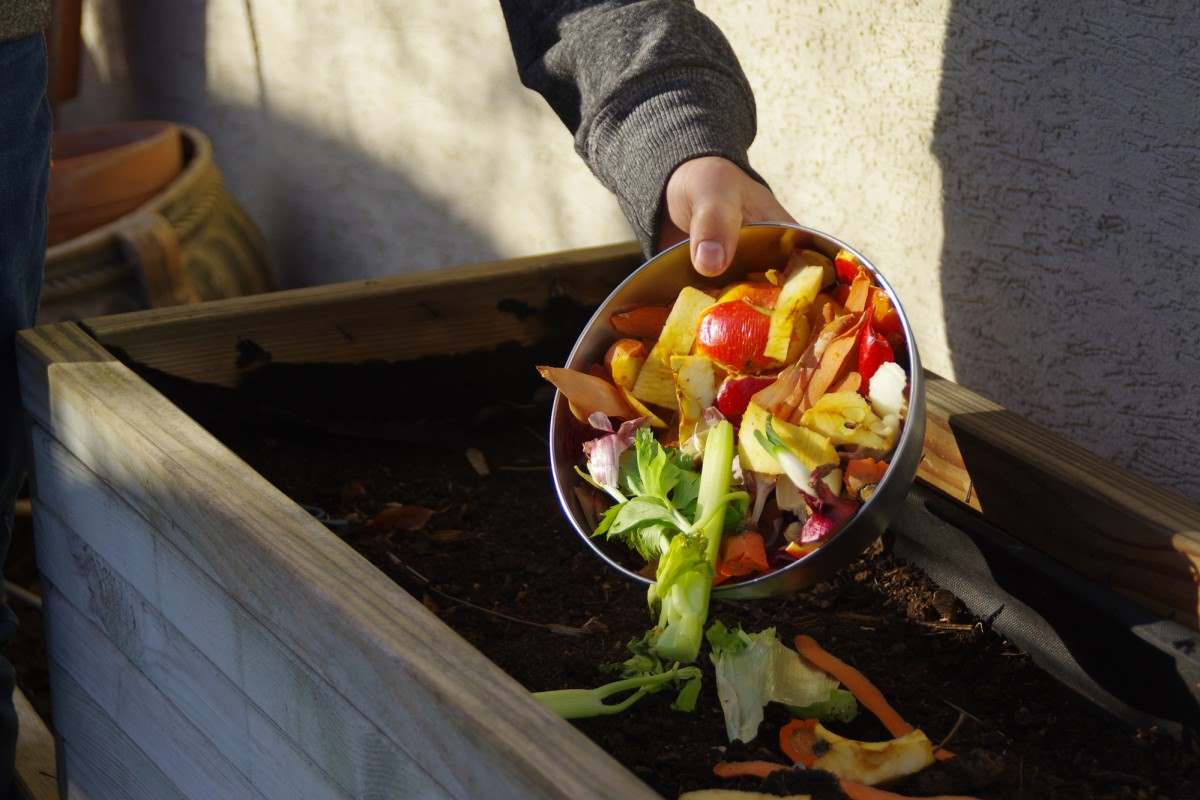Living a more sustainable life doesn’t mean making drastic changes overnight. It’s about making small, positive changes that add up over time. From the way we live in our homes to the choices we make when commuting or shopping, every decision counts. Let’s explore some simple yet effective changes you can make under various aspects of your daily life to embrace a more sustainable lifestyle.

Sustainable Living Around the House
The heart of sustainability lies in our homes, where our daily choices can greatly influence the environment. To embark on a more sustainable living journey, consider the following changes:
1. Energy-Efficient Appliances
Consider replacing old, energy-guzzling appliances with newer, energy-efficient models. From LED bulbs to smart thermostats, these upgrades not only reduce your carbon footprint but also save you money on utility bills in the long run.

2. Proper Insulation
Ensure your home is well-insulated to maintain a comfortable temperature. Good insulation minimizes the need for excessive heating or cooling, reducing energy consumption.
3. Rainwater Harvesting
Install a rainwater harvesting system to collect rainwater for watering plants and gardens. It’s a simple way to reduce your reliance on tap water and contribute to water conservation efforts.
4. Natural Cleaning Products
Opt for eco-friendly cleaning products or make your own using simple ingredients like vinegar and baking soda. This not only reduces the use of harmful chemicals but also promotes a healthier living environment.
5. Smart Thermostats and Energy Monitoring
Invest in a smart thermostat and energy monitoring system for your home. These devices allow you to optimize heating and cooling based on your actual needs and provide insights into your energy consumption, helping you make informed decisions to further reduce your environmental impact.
Sustainable Commuting
Our daily commute is a significant contributor to our carbon footprint. Making sustainable choices in transportation not only benefits the environment but also enhances our overall well-being.
6. Carpooling or Ride-Sharing
Reduce your carbon footprint by carpooling with friends, family, or coworkers. Alternatively, consider using ride-sharing services to share rides with others heading in the same direction.
7. Public Transportation
Opt for public transportation whenever possible. Trains, buses, and trams are often more energy-efficient than individual cars, and they contribute to less traffic congestion.
8. Bicycling or Walking
Embrace a healthier lifestyle by choosing to walk or cycle for short distances. Not only does this reduce emissions, but it also promotes personal well-being.
9. Remote Work
If feasible, negotiate with your employer for remote work options. This not only cuts down on commuting but also contributes to a better work-life balance.
10. Electric or Hybrid Vehicles
Consider transitioning to an electric or hybrid vehicle. As technology advances, these options become more accessible and affordable, offering a greener alternative to traditional gasoline-powered cars.

Sustainable Grocery Shopping
Our choices at the grocery store have a direct impact on the environment. By adopting sustainable shopping habits, we can contribute to a healthier planet.
11. Local and Seasonal Produce
Support local farmers by choosing locally grown and seasonal produce. This reduces the carbon footprint associated with long-distance transportation and supports the local economy.
12. Reusable Bags and Containers
Bring your reusable bags and containers when grocery shopping to cut down on single-use plastic. Many stores now offer bulk sections where you can use your containers for items like grains, nuts, and spices.
13. Meatless Mondays
Consider incorporating meatless meals into your weekly routine. The production of meat has a significant environmental impact, and reducing meat consumption can lower your carbon footprint.
14. Buy in Bulk
Opt for bulk purchases to minimize packaging waste. Many stores offer bulk options for pantry staples like rice, pasta, and nuts, allowing you to fill your own reusable containers.
15. Reduce Food Waste
Plan meals carefully to minimize food waste. Use leftovers creatively, compost kitchen scraps, and be mindful of expiration dates to make the most of your groceries.
Sustainable Kitchen
The kitchen is the heart of the home, and by making sustainable choices, we can nourish our bodies while caring for the planet.
16. Reusable Containers and Utensils
Ditch single-use plastic containers and utensils in favor of reusable alternatives. Invest in stainless steel or glass containers for food storage and bamboo utensils for a more sustainable kitchen.
17. Energy-Efficient Appliances
Choose energy-efficient kitchen appliances to reduce electricity consumption. Look for the Energy Star label when purchasing items like refrigerators, dishwashers, and ovens.
18. Minimalist Kitchen
Adopt a minimalist approach to kitchen gadgets and utensils. Only keep what you genuinely need to avoid unnecessary clutter and the environmental impact of producing and disposing of excess items.
19. Compost Bin
Set up a compost bin in your kitchen for food scraps. Composting not only reduces landfill waste but also produces nutrient-rich compost for your garden.
20. Reusable Water Bottles
Say goodbye to single-use plastic water bottles and invest in a durable, reusable water bottle. Carry it with you to stay hydrated while reducing plastic waste.
Sustainable Fashion
The fashion industry has a reputation for being resource-intensive and environmentally damaging. However, with mindful choices, we can still express our style while minimizing our environmental impact.
21. Second-Hand Shopping
Explore thrift stores or online platforms for second-hand clothing. Buying used items reduces the demand for new production and extends the lifespan of existing garments.
22. Quality Over Quantity
Invest in high-quality, timeless pieces rather than succumbing to fast fashion trends. Quality clothing lasts longer, reducing the frequency of replacements and overall environmental impact.
23. Clothing Swaps
Organize clothing swaps with friends or in your community. This not only gives your wardrobe a refreshing update but also promotes a more sustainable and communal approach to fashion.
24. Eco-Friendly Fabrics
Choose clothing made from sustainable fabrics like organic cotton, hemp, or bamboo. These materials have a lower environmental impact and often involve fewer harmful chemicals in their production.
25. DIY Fashion
Get creative with DIY projects to upcycle or repurpose old clothing items. This not only reduces waste but also allows you to express your style in a unique way.

Sustainable Beauty Practices
Taking care of ourselves doesn’t have to come at the expense of the environment. Sustainable beauty practices prioritize both personal well-being and planetary health.
26. Cruelty-Free Products
Choose beauty and personal care products that are cruelty-free. Many brands now offer products that are not tested on animals, promoting ethical and sustainable practices.
27. Minimalist Beauty Routine
Streamline your beauty routine to focus on essential products. This not only reduces the environmental impact of excessive packaging but also simplifies your daily regimen.
28. Refillable Containers
Look for beauty products that come in refillable containers. Many brands now offer refill stations or options for repurchasing product refills, cutting down on packaging waste.
29. DIY Beauty Products
Experiment with homemade beauty products using natural ingredients. This allows you to control what goes into your products while reducing your reliance on commercially produced items.
30. Recycle Beauty Packaging
Ensure proper disposal of beauty product packaging by recycling it whenever possible. Many beauty brands now have recycling programs or partner with organizations to responsibly handle their packaging waste.
Go Paperless
In our increasingly digital world, transitioning to a paperless lifestyle is not only convenient but also a significant step towards sustainability.
31. Digital Documents and Communication
Embrace digital alternatives for documents and communication. Use email, cloud storage, and digital signatures to reduce the need for paper.
32. E-Books and Digital Magazines
Opt for e-books and digital magazines instead of their physical counterparts. Not only does this save paper, but it also reduces the energy and resources required for traditional printing.
33. Online Billing and Payments
Switch to online billing and payments to reduce the need for paper invoices and checks. Most businesses now offer convenient digital options for managing your finances.
34. Digital Note-Taking
Use digital devices for note-taking instead of traditional paper notebooks. There are plenty of apps available that not only save paper but also offer organizational benefits.
35. Recycled Paper Products
When paper is unavoidable, choose recycled products. From stationery to toilet paper, opting for recycled materials reduces the demand for virgin paper and minimizes deforestation.

Sustainable Office
Whether you work from home or in a corporate setting, incorporating sustainable practices in your workspace is achievable and impactful.
36. Energy-Efficient Office Equipment
Upgrade office equipment to energy-efficient models. This includes computers, printers, and lighting systems, which can significantly reduce energy consumption.
37. Remote Work Policies
Implement remote work policies to reduce the need for office space and commuting. Remote work not only benefits employees but also contributes to lower energy usage in office buildings.
38. Waste Reduction Programs
Implement waste reduction programs in the office, including recycling bins and initiatives to reduce single-use plastics. Educate employees on proper waste disposal practices.
39. Green Energy Sources
If possible, switch to renewable energy sources for powering the office. Many energy providers now offer green energy options that utilize solar, wind, or other sustainable sources.
40. Green Commuting Programs
Encourage employees to use sustainable commuting options, such as biking, walking, carpooling, or public transportation. Offer incentives or recognition for those who actively participate.
Sustainable Gifting
Gift-giving can be a joyful and sustainable experience with a few thoughtful choices.
41. Experiences Over Things
Instead of physical gifts, consider giving experiences like concert tickets, spa vouchers, or cooking classes. This not only minimizes material consumption but also creates lasting memories.
42. Reusable Gift Wrap
Opt for reusable gift wrap options, such as fabric gift bags or recycled wrapping paper. This reduces the amount of single-use wrapping paper that ends up in landfills.
43. Gifts from Sustainable Brands
Choose gifts from brands that prioritize sustainability and ethical practices. From clothing to home goods, many companies now prioritize eco-friendly production methods.
44. Plant Gifts
Give the gift of green by opting for plants instead of traditional gifts. Plants contribute to improved air quality and add a touch of nature to any space.
45. Donate on Behalf of Others
Instead of physical gifts, consider making a donation to a charitable organization on behalf of the recipient. This thoughtful gesture supports a cause while avoiding unnecessary material consumption.
Wrapping Up
Embracing a more sustainable lifestyle is a journey, not a destination. By making these positive changes in various aspects of our daily lives, we not only reduce our environmental impact but also inspire others to join the movement towards a greener, more sustainable future. Remember, every small action counts, and together, we can create a significant positive impact on the planet we call home.
Pin for Later

Need Support or have Questions? Join our Free Facebook Group.
Follow us on Pinterest, Facebook, Instagram, TikTok, Flipboard, or YouTube.
For weekly New Articles and a FREE E-Book get into our NEWSLETTER.






